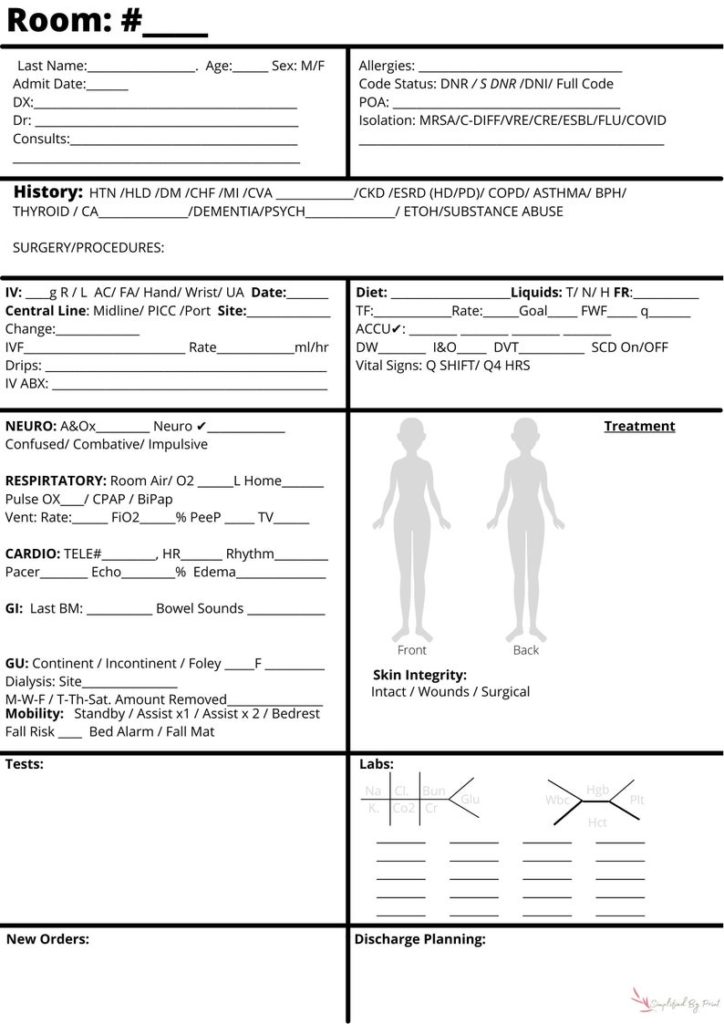


Blood gasses (ABGs) and what you did to correct them. Vent mode and settings, and any changes throughout your shift. IV drips, and if you titrated up or down and why? (Its always nice to have another drip mixed up and ready to go for the oncoming shift if you are running low.) Labs (past, present, and future labs to be done) their values, and what you did to correct them. I found it helpful to write down the following at the beginning of my shift, and added on info throughout my day.

with a brief history of how and why your patient got to the ICU. The Accreditation Council for Graduate Medical Education also requires that residency programs maintain formal educational programs in handoffs and care transitions.Congratulations on your new position! Welcome to the world of SICU nursing!Īctually, shift reports are the end product of what you did and accomplished for the past 8-16 hrs. an opportunity to review any relevant historical data.The Joint Commission National Patient Safety Goal also contains specific guidelines for the handoff process, many drawn from other high-risk industries: The Joint Commission requires all health care providers to "implement a standardized approach to handoff communications including an opportunity to ask and respond to questions" (2006 National Patient Safety Goal 2E). The I-PASS signout format is considered the gold standard for effective signout communication between physicians and has also been shown to improve the quality of nursing handoffs. Synthesis by receiver: an opportunity for the receiver to ask questions and confirm the plan of care.Situation awareness and contingency plans: directions to follow in case of changes in the patient's status, often in an "if-then" format.Action list: to-do items to be completed by the clinician receiving signout.Patient summary: brief summary of the patient's diagnoses and treatment plan.Illness severity: one-word summary of patient acuity ("stable," "watcher," or "unstable").The seminal I-PASS study demonstrated that in a teaching hospital setting, implementation of a standardized handoff bundle-which included a mnemonic for standardized oral and written signouts, training in handoff communication, faculty development, and efforts to ensure sustainability-markedly reduced the incidence of preventable adverse events associated with handoffs.
IPASS NURSING REPORT SHEET FREE
In addition to accurate and complete written signouts, effective handoffs require an environment free of interruptions and distractions, allowing for the clinician receiving the signout to listen actively and engage in a discussion when necessary. Efforts to improve the quality of clinical handoffs must enhance the quality of both written and verbal signouts. Guidelines for safe handoffs focus on standardizing the signout mechanism. (For more information, see the related Primer " Medication Reconciliation.") Implementing Effective Handoff and Signout Protocols To avert this problem, hospitals are required to "reconcile" medications across the continuum of care. The seemingly straightforward act of communicating an accurate medication list is a well-recognized source of error. One study found that being cared for by a covering resident was a risk factor for preventable adverse events more recently, communication failures between providers have been found to be a leading cause of preventable error in studies of closed malpractice claims affecting emergency physicians and trainees. Handoffs and signouts have been linked to adverse clinical events in settings ranging from the emergency department to the intensive care unit. For information about safety issues at the time of hospital discharge, please see the related Patient Safety Primer Adverse Events after Hospital Discharge.) (This Primer will discuss handoffs and signouts in the context of transfers of care during hospitalization. The process of transferring responsibility for care is referred to as the "handoff," with the term "signout" used to refer to the act of transmitting information about the patient.

Effects of critical care nurses' work hours on vigilance and patients' safety. Source: Scott LD, Rogers AE, Hwang WT, Zhang Y.


 0 kommentar(er)
0 kommentar(er)
